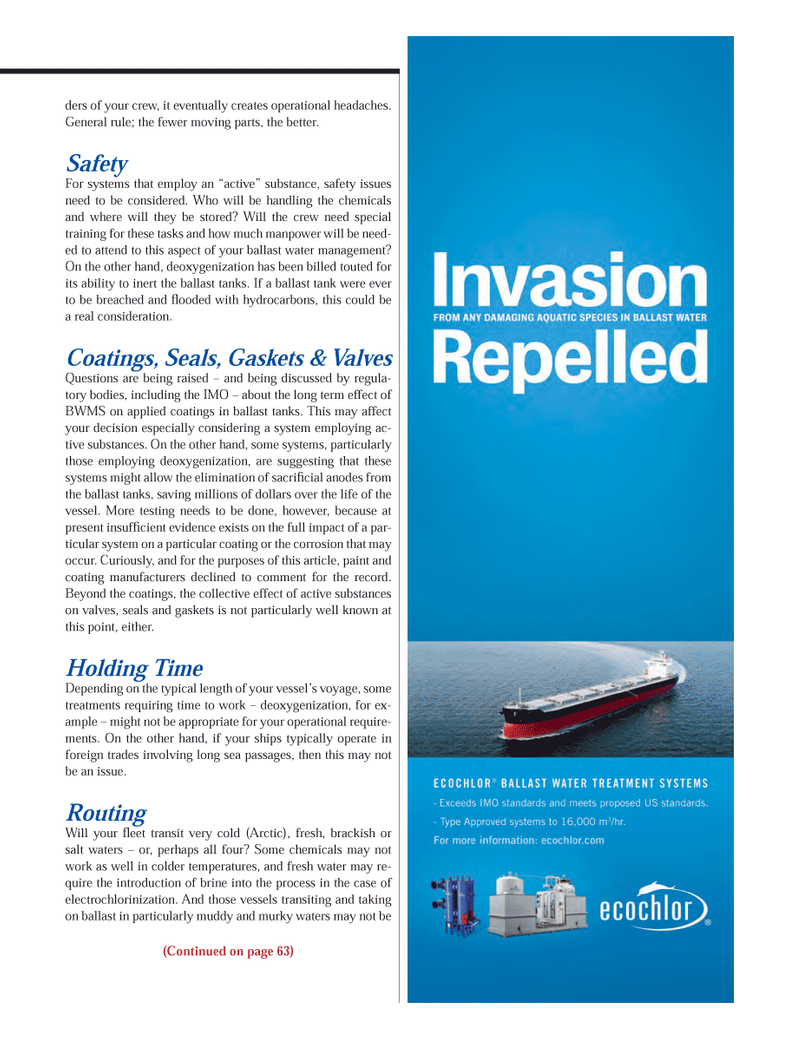
Page 37: of Maritime Logistics Professional Magazine (Q3 2012)
Classification Societies, Quality & Design
Read this page in Pdf, Flash or Html5 edition of Q3 2012 Maritime Logistics Professional Magazine
ders of your crew, it eventually creates operational headaches. General rule; the fewer moving parts, the better. Safety For systems that employ an ?active? substance, safety issues need to be considered. Who will be handling the chemicals and where will they be stored? Will the crew need special training for these tasks and how much manpower will be need- ed to attend to this aspect of your ballast water management? On the other hand, deoxygenization has been billed touted for its ability to inert the ballast tanks. If a ballast tank were ever to be breached and ooded with hydrocarbons, this could be a real consideration.Coatings, Seals, Gaskets & Valves Questions are being raised ? and being discussed by regula- tory bodies, including the IMO ? about the long term effect of BWMS on applied coatings in ballast tanks. This may affect your decision especially considering a system employing ac- tive substances. On the other hand, some systems, particularly those employing deoxygenization, are suggesting that these systems might allow the elimination of sacri cial anodes from the ballast tanks, saving millions of dollars over the life of the vessel. More testing needs to be done, however, because at present insuf cient evidence exists on the full impact of a par- ticular system on a particular coating or the corrosion that may occur. Curiously, and for the purposes of this article, paint and coating manufacturers declined to comment for the record. Beyond the coatings, the collective effect of active substances on valves, seals and gaskets is not particularly well known at this point, either. Holding Time Depending on the typical length of your vessel?s voyage, some treatments requiring time to work ? deoxygenization, for ex- ample ? might not be appropriate for your operational require-ments. On the other hand, if your ships typically operate in foreign trades involving long sea passages, then this may not be an issue. RoutingWill your eet transit very cold (Arctic), fresh, brackish or salt waters ? or, perhaps all four? Some chemicals may not work as well in colder temperatures, and fresh water may re- quire the introduction of brine into the process in the case of electrochlorinization. And those vessels transiting and taking on ballast in particularly muddy and murky waters may not be (Continued on page 63)MP #3 34-49.indd 37MP #3 34-49.indd 378/15/2012 10:48:13 AM8/15/2012 10:48:13 AM

 36
36

 38
38
